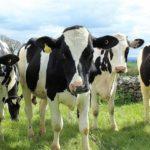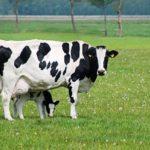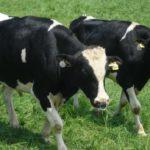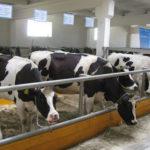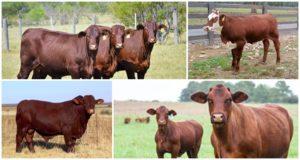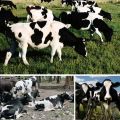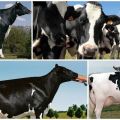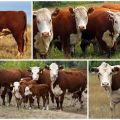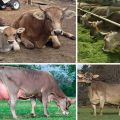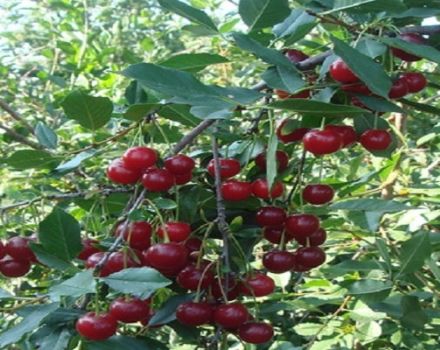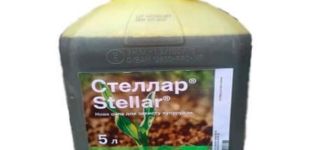Description and characteristics of black-and-white cows, rules of keeping
The black-and-white breed of cows has long been used in the territory of the former CIS countries. Farmers everywhere choose this breed for its unpretentiousness, endurance and high milk yield. The cows are characterized by a good-natured disposition, and the meat is distinguished by its high taste characteristics. The black-and-white cow will be an excellent choice for a beginner, inexperienced farmer.
Origin story
For the first time the breed was bred and described in the early 40s of the 20th century. Crossbreeding of local cattle with imported Dutch and Swedish bulls was carried out. Additionally, lines of Frisian black-and-white cattle were introduced. After the final formation of the type of constitution, animals with a red suit were removed from the herd book and only black and white were left.
The breed was officially recognized only by the beginning of the 1960s. It was widespread in the Ukrainian and Belarusian USSR, but is now gradually being replaced by imported foreign breeds.
Breed habitat
The main breeding areas for black-and-white cows continue to be the countries of the former Soviet republics, including Russia, Ukraine, Belarus and Kazakhstan. Young animals - gobies and heifers, are well adapted to temperate climates and even endure severe winters on poor food. The productivity of a commercial herd with abundant feeding reaches 5000 thousand liters of milk per year. Only cows with a characteristic color fit into the herd book.

Description and characteristics of the black and white cow
The breed is average in weight and milkiness. Adult cows weigh up to 500 kg, and breeding bulls weigh more than a ton. The direction of breeding is dairy, but if necessary, you can grow young animals for meat. The meat is tender, not tough, and low in fat. The herds make good use of the pasture and gain weight even without the use of concentrated feed.
The breed is undemanding to environmental conditions. For the winter, cows are overgrown with thick wool, allowing them to survive the harsh winters. Already at two years old, the cow is completely ready to start mating and receiving milk, therefore the breed is considered early maturing. Calves weigh 50-60 kg at birth.
Advantages and disadvantages
The breed cannot be called ideal: like any fruit of selection, it has its pros and cons.
Breeding is underway, both in Russia and in Ukraine, to bring the breed to a single standard, as well as to increase milk productivity. For higher yields, it is recommended to cross the cows with Danish and Dutch bulls.
How to properly maintain and care
Caring for black-and-white cattle is no different from keeping other cows. The barn must be clean, dry and light. Natural light prevails. In winter, artificial lighting must be turned on for at least 6 hours a day. Animals adapt well to the off-season, overgrow with wool, so you can alternate pasture and tethered housing.
It is advisable to combine juicy and concentrated feed. You should carefully introduce new grass into the diet - the grazing is gradually increased from several minutes to several hours. Livestock are especially sensitive not to cold, but to drafts. Therefore, cracks and holes in the barn must be sealed with heat-insulating material. Dairy cows undergo regular veterinary checks, especially if the milk is marketed. It is forbidden to sell non-certified products.
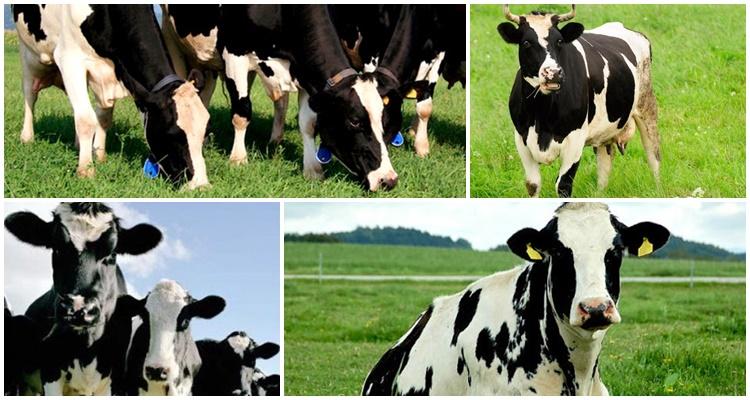
Diet
The diet of the pestle depends on the physiological state of the animal. The owner must regulate the feed throughout the year. Dairy cows need a large amount of protein, therefore, the percentage of hay, bran, and cake is increased in their diet. In the summer, you can transfer animals to alfalfa, clover, and herbs. The more varied the diet, the more satisfied the need for nutrients and minerals. Therefore, it is recommended to add fresh vegetables - beets, carrots and turnips.
Calves are taught to eat solid foods as quickly as possible. This increases the weight gain and also saves more milk for sale. At first, hay and mixed feed are mixed in equal proportions until a homogeneous, semi-liquid mass is made and fed to the calves in a bucket. Gradually the mixture is hardened and only hay is left in the end.
Breeding specifics
The main goal of breed selection is to improve milk and meat productivity. In order for the calf to be large and hardy, it is recommended that cows be crossed with representatives of the Dutch or Friesian breed. The main selection is pure-bred, therefore the main value is of pedigree animals without admixtures of foreign blood. Pedigree books are open, but only the blood of the breeds listed above is allowed.
Inbreeding, or closely related mating, is used only in experimental breeding farms. On commercial dairy farms, inbreeding can lead to a sharp drop in productivity and mass death of calves.
According to breeding theory, bulls should be improvers, and cows should be improved animals. Therefore, the bull must meet all breed standards, have the correct weight, constitution; have good health, endurance and unpretentiousness, and most importantly - surpass the cow in all the above qualities.It makes no sense to cross a first-class cow with a bad bull just for the sake of milk - such breeding greatly degrades the breed class and, in the end, leads to losses.
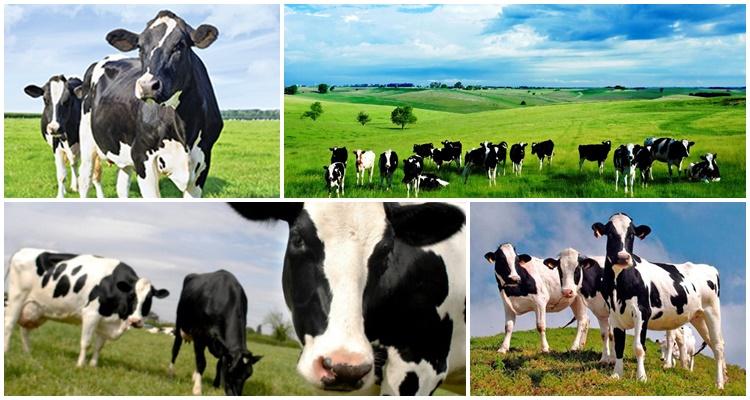
Diseases and prevention
Pestlings are disease-resistant, but common ailments are common among cows that every farmer should be aware of. Pathologies often develop due to a violation of the technology of harvesting and giving feed. Cows have a complex digestive system, so any poor quality food is bad for your health.
A blockage of the esophagus occurs when a cow is given too large pieces of root vegetables that she cannot chew.
Food gets stuck in the esophagus and causes profuse salivation, anxiety, refusal of food and water. The signs are bright and difficult to miss. The only help in case of a blockage of the esophagus is to immediately call a veterinarian, and then grind the feed before giving.
Another common pathology is the tympanic scar. The rumen is one of the sections of the cow's stomach. Improper feeding causes the stomach to fill with gas and cause severe pain. The reasons are grazing on wet grass, overfeeding, giving the calves fermented milk products. Before the arrival of the veterinarian, you can alleviate the condition of the animal - massage the stomach, smear the tongue with a small amount of creoline or tar.
Typical signs of the disease in cattle are lethargy, refusal to feed, fever. Normally, the temperature in the rectum of an animal is 38.5-39.5 degrees. An increase indicates poisoning, allergies, or the onset of an inflammatory process. The state of the animal can also be seen by other external signs. A healthy cow stands quietly, eats or chews gum, the muscles are not tense, the coat is thick and shiny.
Deviations from the norm should alert the farmer and call the veterinarian. Care and proper nutrition are the key to the longevity of the animal and high milk yield. The pestle is able to provide the owner with a yield of 5-6 thousand liters.

